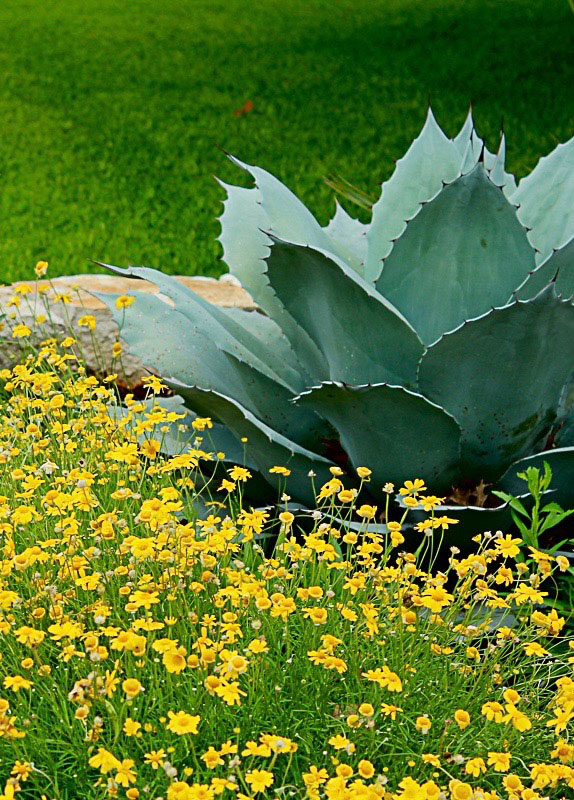Someone turned the thermostat up outside last week and I’m afraid it’s going to be stuck this way for a while. That means gardeners will ramp up their search for drought-tolerant plants to keep their landscapes beautiful and thriving through the dog days of summer.
Some of the most drought-tolerant plants available to us are succulents. Succulents store water in their leaves, stems and/or roots and can tolerate extreme drought, high heat, and poor soil. They generally have few insect pests or problems with disease.
More than 50 plant families are considered succulents. Agaves, aloes, euphorbias, sedums and yuccas are just a few of the categories. Agaves are among the most striking succulents, belonging to the family Agavaceae. While agaves and cacti are both succulents, agaves are not cacti. The name Agave comes from the Greek agauos – of kings and heroes, illustrious, hence, noble.

Not all agaves mature into 6-foot-tall giants that devour landscapes and relentlessly spread pups. There are many, much smaller and more manageable species that can be used as focal points in the landscape and beautiful potted plant arrangements. Some of the smaller agaves that do well here and are suitable for small gardens and containers include squid, quadricolor, blue glow and Queen Victoria agaves. These succulents are ideal for gardeners with limited space.
The thick, juicy stems of agaves add interesting structure, texture, variety and color to a landscape. Mixing textures in landscape design makes a garden more interesting. Some of my favorite design combinations include large, structural agaves next to soft, flowering plants like Mexican bush sage, salvias, or grasses.
Agaves are generally very low maintenance. They have low water needs (not no water), but they are prone to rot if overwatered, a common occurrence when gardeners water them on the same schedule as thirstier plants. They need fast-draining soil, and experts recommend a soil mix that includes a little bit of sand and a little decomposed granite.
Not all agaves like full sun, either. This is a common myth — some of them actually prefer partial shade with bright, but not direct sunlight.
Agaves are primarily monocarpic, meaning that they flower, bloom, set seeds, and then die. The commonly used term “century plant” is a misnomer, as most agaves bloom much sooner than that, especially in manmade landscapes. As the agave begins to flower, the rosette will produce a tall stem and then horizontal branches, covered with small, cylindrical blooms.
The buds open in succession up the stem with the flowers on the lower branches opening first and drying out by the time the uppermost flowers open. This process can take 3-4 weeks or more. When the flowers open, they release pistils and stamens, attracting bees, bats, birds and other insects.
The flowering itself doesn’t kill the mother plant. Once the blooms are finished, the production of fruits and seeds and the resulting chemical changes within the plant leave it spent and it dies.
Most agaves also produce offsets, or ‘pups,’ that come from the base of the mother plant underground. Many species are prolific producers of pups, while others never develop them. Because removal of pups can be a lot of ongoing maintenance, be sure to do your research before you buy an agave. You’ll want to know the right sun conditions, cold hardiness, full size at maturity, and likeliness to pup. Growth and pupping will, of course, depend on the soil and watering conditions in your garden.
There are more than 200 species of Agave, ranging from 4” x 6” to 8’ x 12.’ From emerald to shades of blue and vibrant variegated stripes, there is sure to be one that’s just right for your garden.


Leave A Comment